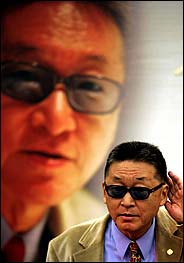Unfortunately some cancer tests do a lot more good for doctors’ revenues than they do for patients’ longevity:
“The improvement in long-term mortality may be due to the higher proportion of small or slow-growing tumors being detected, which means you start counting earlier,” says Dr. Jaffe. That’s why longer survival, measured from the time of diagnosis, is a misleading measure of progress against cancer, and no substitute for reductions in mortality.
The more scientists study cancers, the more indolent ones they discover. Researchers in Japan, for instance, find that CT scans detect almost as many lung lesions in nonsmokers as in smokers. But since nonsmokers have a mortality rate from lung cancer less than 10% that of smokers, the vast majority of what CT scans picked up would never have progressed to anything life-threatening. And a Mayo Clinic study found that although X-rays detect lung cancers at earlier stages, and lead to more five-year survivors, early detection does not lower death rates.
For colon cancer, the fecal occult blood test “does decrease your risk of dying of this cancer,” says Dr. Kramer. “But for colonoscopy and sigmoidoscopy, which appeal to our intuition [about early detection], the evidence is not great.” They pick up polyps earlier, but not all polyps become cancers, “and we don’t know what proportion would lead to death.”
The Pap test for cervical cancer has saved lives, but many of the abnormal cells it finds wouldn’t go on to become cancer. Most women with low-grade or even high-grade lesions would have been fine anyway. Similarly, the PSA test for prostate cancer picks up tumors that are biologically nonaggressive.
The discovery that many tumors are innocuous casts doubt on the value of new screening tests. “You may fool yourself into thinking a test is twice as sensitive,” says Dr. Kramer, “but the only extra cancers it picks up are those that wouldn’t have harmed the patient.
SHARON BEGLEY. “Early Cancer Detection Doesn’t Always Give Patient an Advantage.” The Wall Street Journal (August 26, 2005): B1.



